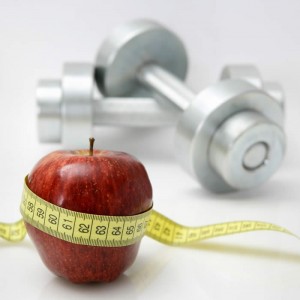 OK, so the stereotype of the online denizen (this includes peeps like me who work in front of a computer all day, and peeps like you who study online in front of a computer) is a sedentary, Cheetos munching lot who cringes when the curtains are drawn open and light shines in. All kidding aside though, in today’s modern life, it can be hard to carve out enough time to spend on health and wellness. Kathleen Sebelius, the Obama administration’s Secretary of Health and Human Services, has declared June to be Prevention and Wellness month.
In a recent article on the Huffington Post Sebelius said, ” We know there’s more to good health than going to the hospital when you get sick. Good health starts with steps we can all take to avoid getting sick in the first place, from getting regular check-ups, vaccinations, and recommended screenings, to eating a healthy diet and getting enough exercise.” This blogger concurs with this line of thinking and has even taken the drastic step of adding a SECOND walk for his self and his dog Henry every day to try and keep physically fit. So online students, save your work, take a pause and consider what you can do to boost your own health and wellness in June and for the future.
OK, so the stereotype of the online denizen (this includes peeps like me who work in front of a computer all day, and peeps like you who study online in front of a computer) is a sedentary, Cheetos munching lot who cringes when the curtains are drawn open and light shines in. All kidding aside though, in today’s modern life, it can be hard to carve out enough time to spend on health and wellness. Kathleen Sebelius, the Obama administration’s Secretary of Health and Human Services, has declared June to be Prevention and Wellness month.
In a recent article on the Huffington Post Sebelius said, ” We know there’s more to good health than going to the hospital when you get sick. Good health starts with steps we can all take to avoid getting sick in the first place, from getting regular check-ups, vaccinations, and recommended screenings, to eating a healthy diet and getting enough exercise.” This blogger concurs with this line of thinking and has even taken the drastic step of adding a SECOND walk for his self and his dog Henry every day to try and keep physically fit. So online students, save your work, take a pause and consider what you can do to boost your own health and wellness in June and for the future. June is Prevention and Wellness Month
 OK, so the stereotype of the online denizen (this includes peeps like me who work in front of a computer all day, and peeps like you who study online in front of a computer) is a sedentary, Cheetos munching lot who cringes when the curtains are drawn open and light shines in. All kidding aside though, in today’s modern life, it can be hard to carve out enough time to spend on health and wellness. Kathleen Sebelius, the Obama administration’s Secretary of Health and Human Services, has declared June to be Prevention and Wellness month.
In a recent article on the Huffington Post Sebelius said, ” We know there’s more to good health than going to the hospital when you get sick. Good health starts with steps we can all take to avoid getting sick in the first place, from getting regular check-ups, vaccinations, and recommended screenings, to eating a healthy diet and getting enough exercise.” This blogger concurs with this line of thinking and has even taken the drastic step of adding a SECOND walk for his self and his dog Henry every day to try and keep physically fit. So online students, save your work, take a pause and consider what you can do to boost your own health and wellness in June and for the future.
OK, so the stereotype of the online denizen (this includes peeps like me who work in front of a computer all day, and peeps like you who study online in front of a computer) is a sedentary, Cheetos munching lot who cringes when the curtains are drawn open and light shines in. All kidding aside though, in today’s modern life, it can be hard to carve out enough time to spend on health and wellness. Kathleen Sebelius, the Obama administration’s Secretary of Health and Human Services, has declared June to be Prevention and Wellness month.
In a recent article on the Huffington Post Sebelius said, ” We know there’s more to good health than going to the hospital when you get sick. Good health starts with steps we can all take to avoid getting sick in the first place, from getting regular check-ups, vaccinations, and recommended screenings, to eating a healthy diet and getting enough exercise.” This blogger concurs with this line of thinking and has even taken the drastic step of adding a SECOND walk for his self and his dog Henry every day to try and keep physically fit. So online students, save your work, take a pause and consider what you can do to boost your own health and wellness in June and for the future. 








